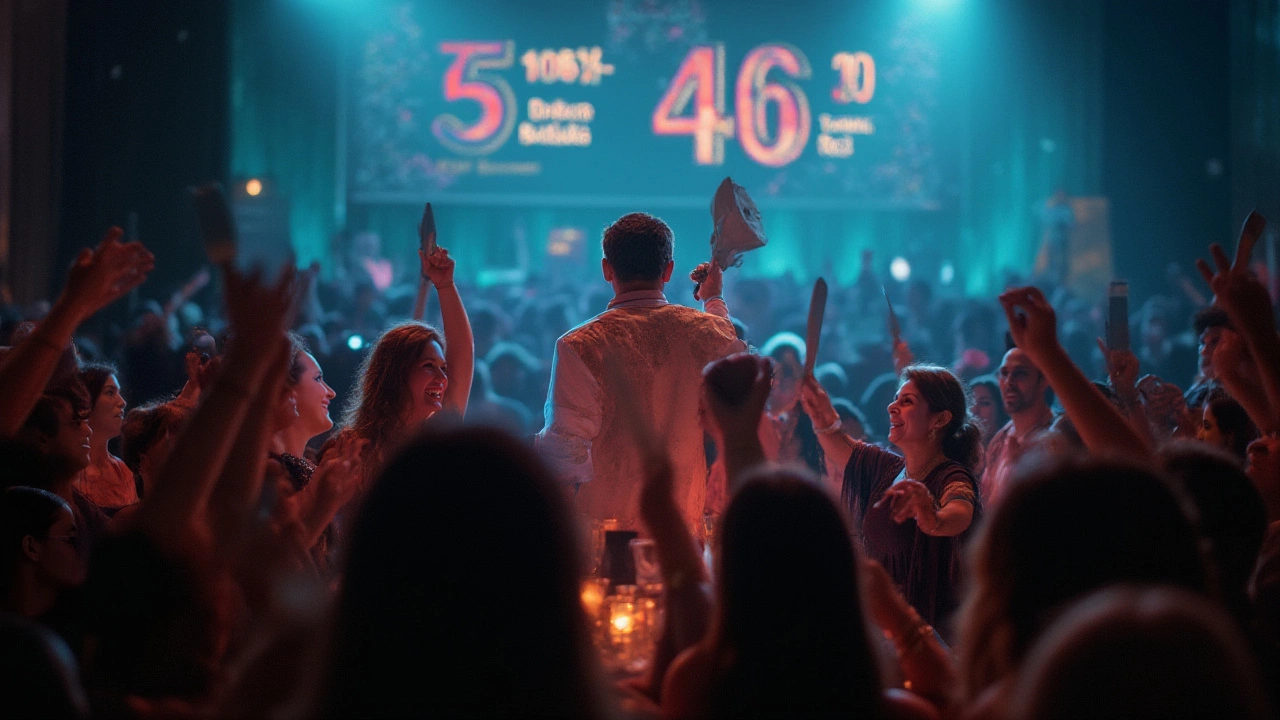Nothing gets people reaching for their silk gloves and wallets quite like a charity ball. The glitter, the music, the clink of champagne—and, let’s be real, the chance to make a real difference in someone’s life. A well-planned charity ball isn’t just a fancy party. It’s a force for social good, making donors feel like VIPs and leaving volunteers proud. But here’s the thing no one says up front: pulling it off takes more than killer centerpieces and jazzy invitations. It’s a mix of strategy, people skills, style, and gritty organizational work. The satisfaction when the totals come in? Worth every checklist and phone call.
Laying the Groundwork for a Standout Charity Ball
The big question: why go for a ball, not just a plain dinner? Because people love an excuse to put on their best dress, dance, and feel special. That sense of occasion turns donations from a chore into a joy. But you need more than a pretty venue. Before you book a ballroom, start with a cause that makes people want to show up and give. Whether it’s helping sick kids or funding scholarships, get super specific about what you’re supporting. Data shows that events with a clear, emotional hook pull in nearly twice the donations of those with a fuzzy pitch. If you can put a face to the cause—personal stories, real impact—the ball instantly becomes more meaningful.
Next, set a fundraising goal that’s bold but realistic. Take your charity’s typical donation income, look at similar local events, and aim for a stretch target. A lot of organizers budget for ticket sales alone, but smart planners factor in silent auctions, sponsorships, and even a text-to-donate push mid-evening. Many big city events bring in 40% of donations this way. You’ll want a spreadsheet, and it’ll probably get messy, but clear numbers become your guiding light amid all the glamour.
Then, call in your dream team. You want enthusiastic volunteers but also folks with sharp business sense, access to VIP circles, and nerves of steel when caterers go rogue. Assign clear roles: someone handles sponsorships, someone else wrangles the guest list, another runs the auction. Divide tasks, check in every week, and always have snacks at planning meetings. Happy volunteers stay late and bring friends. For sponsorships, craft short, compelling proposals. Corporate backers love events with lots of media coverage—show them proof, like past press clippings or Instagram impressions, and your email will jump to the top of their inbox.
Picking the right date and venue is where experience matters. Avoid wedding season (vendors charge more), and check the city calendar for sports matches or other galas that clash. Hotels and historic mansions draw the crowd, but unconventional spots—think art galleries or rooftop gardens—spark curiosity and might even cost less. Ask about hidden fees, like security or sound system charges, and always tour the venue before signing.
- Choose your charity cause and define your message.
- Build a realistic budget with room for surprises.
- Recruit people with event planning, fundraising, and networking skills.
- Lock down a date and venue early. Unusual locations can work wonders.
- Pitch to sponsors with concrete audience data and social reach.
Once the essentials are locked in, craft your invitation list. Mix loyal donors with fresh faces—every great event grows its supporter base. VIPs, influencers, even beloved local pets (let’s hear it for animal charities!)—all can add sparkle. Design invitations that hint at the experience to come, whether it’s black tie or a masquerade twist. Make RSVPs foolproof. No one loves emailing PDFs back and forth, so embrace online platforms or custom event apps; they save time and can track donations in real-time. At this stage, you’re not just throwing a party. You’re building momentum for something people can’t wait to attend.
| Charity Ball Statistics (2024) | Value |
|---|---|
| Average Ticket Price | $175 |
| Typical Fundraising Goal | $70,000 |
| Average Auction Contributions | 35% of total revenue |
| Corporate Sponsor Involvement | 70% of large events |
| Guest Attendance Growth Since 2021 | +23% |
By the time the invitations go out, you should have your theme, timeline, and run of show ready. Will there be a celebrity MC? Is there a special moment of giving (like a paddle raise)? All these details should be planned upfront, so your guests aren’t surprised—and neither are you.

Designing the Experience: From Setup to the Dance Floor
This is where it gets exciting—and a bit overwhelming. The mood, the colors, the music, the food—it all sets the tone for giving. Strong themes, like “Midnight in Paris” or “Roaring Twenties,” work best when they’re carried through every detail. You don’t need Broadway-level production values, just a cohesive look. Start with the essentials: table settings, programs, and lighting. Candles, fairy lights, or even projected animations on the walls can elevate any space. And yes, splurging on professional lighting is worth it—a good spotlight makes your speakers and auction items pop.
If you want people to open their wallets, keep them entertained and feeling like VIPs. Live music beats a playlist every time—even just a jazz trio during cocktails is enough. Dance performances, magicians during intermissions, or quick photo booths keep guests buzzing between courses. Centerpieces can double as auction prizes, and personalized favors (like tiny jars of local honey) give guests a token of appreciation. Don’t underestimate the power of a good photo wall. Everyone with a smartphone is a potential social media megaphone, so tempt them to share snaps with branded hashtags. This kind of exposure makes it easier to recruit sponsors for your next ball too.
Culinary details matter, but don’t obsess over perfection. Dietary restrictions are everywhere, so offer plant-based and allergy-friendly options. A trend lately: grazing tables with gourmet snacks that keep guests fueled throughout. If your budget is tight, swap multi-course meals for passed appetizers and dessert buffets; guests care more about mingling than polishing off steak anyway. Just make sure coffee is always available after dinner. Trust me, nothing saps dance party energy like finding out the barista has gone home.
Now, the real magic: keeping the fundraising front and center but never forced. Auction items should be unique but relevant—think dinner with a local chef, backstage passes, or art from community artists. Encourage bidding wars by allowing online pre-bidding, or hire a charismatic auctioneer who keeps things zipping along. Raffles are easy crowd-pleasers. But the secret weapon is the “fund a need” moment—a story from someone helped by your charit, then a direct ask for donations at different levels. Events that do this raise up to 25% more, according to Charity Navigator’s 2024 donor survey.
If your crowd is tech-savvy, use QR codes, bidding apps, or text-to-give systems right at the table. Real-time donation meters projected on a screen build excitement and nudge reluctant donors. Old-fashioned pledge cards still work, but digital platforms let you thank donors instantly. And speaking of thanks: pack your evening with gratitude. Thank sponsors and volunteers multiple times, in person, in print, and even on take-home goodies (like branded cookies or candles).
- Pick a strong, consistent theme and show it off everywhere.
- Keep your guests moving and mingling with live entertainment.
- Offer easy, inclusive meal options.
- Use donation tech to make giving almost automatic.
- Lots of public thank-yous—no one ever complains about being appreciated.
Your guests should leave the ball glowing with goodwill, maybe still humming from the live music, and already looking forward to next year. That’s how you start building buzz and loyalty—key ingredients for breaking donation records down the road.

Wrapping Up, Measuring Success, and Building the Next Ball
The lights are off, the last balloon’s been popped, and your feet probably ache like mine did after chasing Whiskers off the buffet setup (who knew cats liked smoked salmon?). But the real work kicks in after the party ends. Every winning fundraiser tracks results, thanks donors promptly, and captures the moments that made the night memorable. Start by tallying ticket sales, auction totals, in-room donations, and sponsorship income. Pull these numbers against your original targets so you can celebrate wins or tweak your approach next time. Make sure you note which auction items flopped and which caused a bidding frenzy—that’s gold for the next event’s planning.
Don’t wait a week to send your thank-yous. Personalized emails or even hand-written cards stand out, especially to top donors and sponsors. Include a few photos from the night (your volunteer photographer’s best friend here), and tell a short story about how the money will be used. Transparency is the heart of repeat giving—people want to feel they’re changing lives, not just buying a seat at a party. Events that follow up with clear impact stories retain 47% more donors year over year. It’s not just about the money; it’s about keeping the flame of generosity burning.
If you used a text-to-give or auction platform, download those reports and analyze participation data. Was there a surge in donations after a particular speech? Did the photo booth hashtags trend on Instagram? Stats like these guide you next year. And if some VIPs made sizable donations, a phone call or even a casual coffee invite makes them feel valued—and might spark new partnership ideas. Don’t forget to run a post-event debrief with your volunteer committee. What worked? What almost blew up? Document everything, and keep an event binder or shared drive for the next brave soul who picks up the reins.
This is also prime time to grow your event’s reach. Share photos and video recaps on social media, tag happy guests and local media (with their permission), and celebrate sponsors extra loudly. A short video montage with stats on the funds raised and lives changed makes the event’s story last longer than a single night.
If you want your charity ball to live on people’s calendars, start teasing next year’s date as soon as possible. Early birds love first dibs on tickets and recognition. Offer returning volunteers upgraded roles, and ask participants what they’d like to see improved or changed. Word of mouth is powerful in the charity world—each guest who had a great time becomes your best recruiter and ambassador. There’s an emotional feedback loop to charity balls: people remember how they felt, and those warm feelings make them more likely to give and attend again.
- Total up all income streams—and learn from the numbers.
- Send out thank you notes and impact updates within 24-48 hours.
- Debrief with your team and document what you learned.
- Promote the event’s outcomes through photos and social posts.
- Start planning the next ball early to snag top venues and sponsors.
So, want your own magical, meaningful charity ball? Ask yourself: what do I care deeply enough about to send those first emails and make those big plans? If you keep your focus on your cause and never forget that events are really about people—connecting, feeling, giving—you’ll smash your fundraising goals and have a blast along the way. And if you ever need a furry mascot to charm the crowd, I know a cat who loves the spotlight almost as much as she loves smoked salmon.
